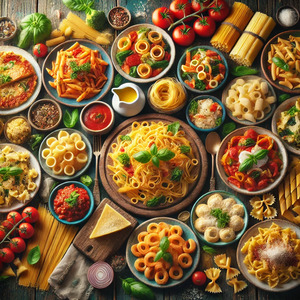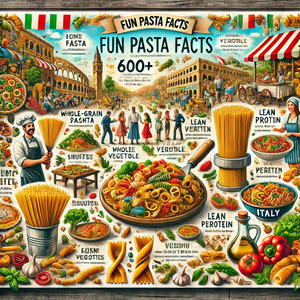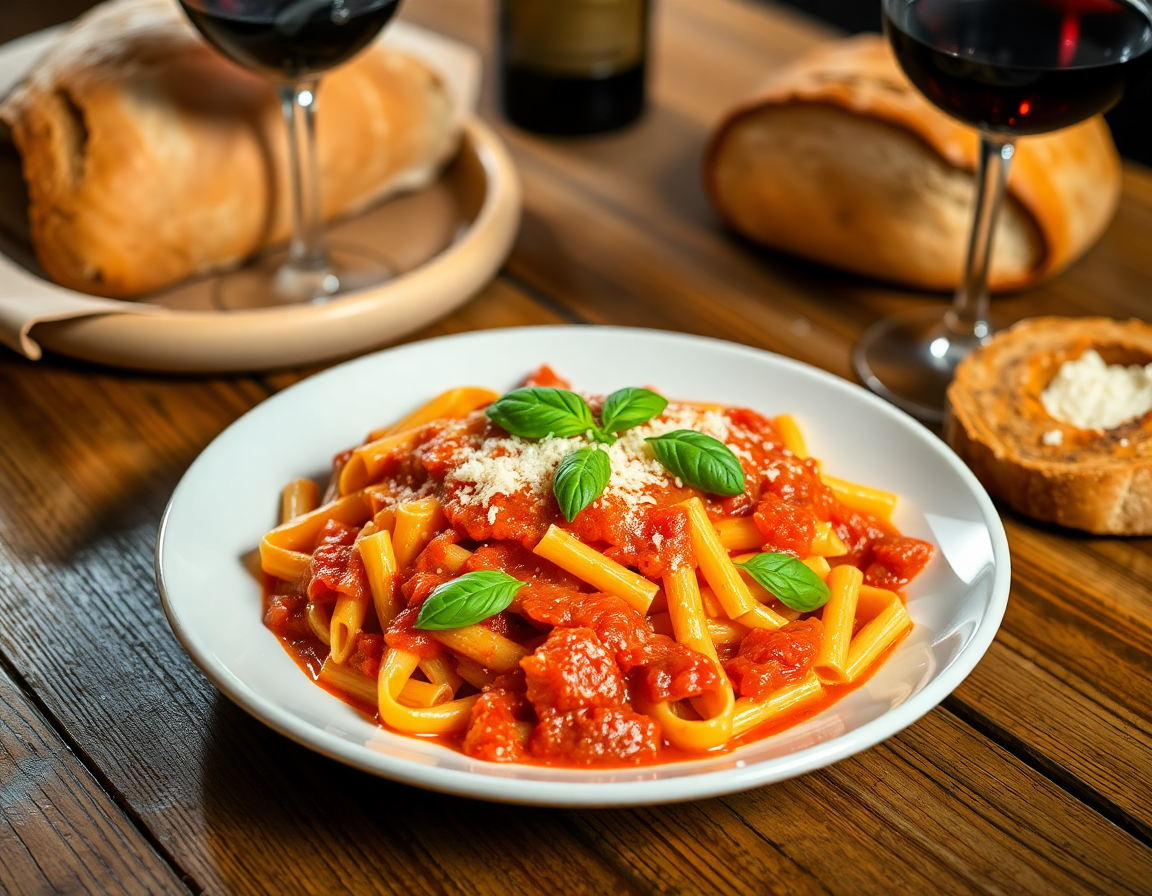Italy is known for many culinary delights, but Pasta easily stands above the rest in the fellowship of comfort foods. From the highest peak of the Alps in the north to Sicily’s bright sunny shores down south, pasta is the heart of Italy’s culinary culture, forming the basis of an incredible diversity of dishes that are by no means homogeneous regionally but share a common heritage of rich tradition and flavor. Whether it is spaghetti with tomato sauce or layered lasagna with béchamel and meat, pasta just can’t be beat around the world. What makes pasta from Italy so special and some types you may have available to try making at home, along with some tips for a fun night with pasta.
What Makes Italian Pasta Special?
Italian pasta represents in the first place a food product known for their richness in variety, flexibility, and the possibility to be complemented with rich bounds of flavors and textures. The beauty of pasta is its simplicity on one of the most basic ingredients: durum wheat semolina and water; however, by using different shapes, sizes, and preparations, it is able to provide endlessly varied flavors and experience.
Italian pasta stand apart from the rest, however, is its cultural relevance. After all, food ingredient would have been at the top of Italian meals. Prepare and eat-these are part of family tradition, regional pride, and historical influence. Miles away from fast food, convenient meals Italian pasta might actually be quite an affair of cooking slowly, then relishing the taste made into every single one of them.
Types of Pasta: Exploratory Survey of Italian Shapes and Sauces

1. Spaghetti – The most iconic, beloved pasta, spaghetti is long, thin and perfect for tossing with just about any sauce. Classic versions range from “spaghetti al pomodoro” (tomato sauce) to “spaghetti alla carbonara” (eggs, cheese, pancetta, and pepper), and so much more.
2. Penne – This short tubular pasta is fantastic to have in hearty sauces, be it marinara, pesto, or even creamy Alfredo. The ridges on the surface of penne pasta help the sauce cling to the pasta; thus, every bite is full of flavor.
3. Fettuccine – Fettuccine is identified by its flat shape and broad bread, mostly used with creamy based sauces such as the famous “fettuccine Alfredo or fettuccine alla bolognese” a good one for the heavy indulgent dishes.
4. Rigatoni – Rigatoni is thicker and heavier than penne, but they are great when layered with chunky sauces, specifically those containing vegetables or ground meats. The broad, ridged surface ensures that even the most rugged sauces hug every piece of pasta.
5. Lasagna – On the one hand, it is the name of a pasta shape, but there is also a very known dish called Lasagna. Wide, flat noodles layered with rich fillings of béchamel sauce, cheese and various meats or vegetables; all baked to perfection, it makes for a very comforting hearty meal.
6. Tortellini – The small ring-like pasta are filled with everything, such as cheese, meat, or vegetables. Often, they are boiled in broth, though it is just as common to toss it or serve it cold in salads.
7. Orecchiette – Small “ear” shapes, orecchiette pair well with vegetable-based sauces, like “orecchiette con cime di rapa” (broccoli rabe), or a hearty sausage and tomato sauce.
Pasta Sauces: From Simple to Complex
The affair between pasta and sauce is nearly sacred in Italy. It is the pasta that determines which sauce it should have. These are some of the traditional Italian pasta sauces:
1. Pomodoro Sauce: Pretty simple but full of flavor; it contains tomatoes, olive oil, garlic, and fresh basil. The taste is really good for pasta, such as spaghetti, penne, or any pasta that looks long.
2. Marinara sauce: a bit more merciless than a pomodoro sauce would be, simply because it would consist of tomatoes, garlic, onions, and herbs. That would be a great pasta “spaghetti marinara” or “penne marinara”
3. Bolognese sauce: meaty, rich sauce from Bologna, cooked with ground meat, onions, carrots, celery, tomatoes, and wine, a classic accompaniment to such comfort pasta dishes as “tagliatelle alla bolognese” and “lasagna”.
4. Pesto: Fresh, emerald green sauce from basil, pine nuts, garlic, Parmesan cheese, and olive oil. Pesto is a great old-fashioned accompaniment for trofie or spaghetti and also a great dip or spread.
5. Carbonara: An Italian specialty from Rome, “carbonara” is a creamy sauce made of eggs, Pecorino Romano cheese, pancetta, and black pepper. Served mainly with spaghetti, it’s also fine to serve it with fettuccine or rigatoni.
6. Alfredo Sauce : A Roman original, actual “fettuccine Alfredo” is a rich, creamy sauce made with butter, cream, and Parmesan. Super fantastic with wide, flat noodles like fettuccine or pappardelle.
How to Get Your Pasta Right at Home
Far from a mystical art that only the most accomplished chefs may aspire to master, great pasta at home is actually relatively easy to make. Here’s how you can up the pasta game at home:
1. Salt the Water Liberally: Whenever you boil pasta, a good amount of salt in the water seasons the pasta itself, in addition to what it goes into, without overpowering.
2. Don’t Overcook the Pasta: Pasta must be cooked al dente, which means always is firm to the bite. Always follow the cooking time instructions that are included in the package and test a minute before the suggested time to prevent overcooking.
3. Save Some Pasta Water: Keep a cup of the pasta water before rinsing it away. Use it to balance the sauce so it becomes creamier and clings onto the pasta better.
4. Toss Pasta and Sauce Together: Never pour sauce over pasta. Toss pasta and sauce together in the pan for a couple of minutes. It helps the pasta to absorb the sauce better, and there is not such a sharp after-texture difference in eating.
5. Fresh Ingredients: whether it is tomatoes for your sauce, fresh basil for pesto, or freshly grated Parmesan, the better the ingredients, the better the flavor at the table.
Fun Pasta Facts

-Pasta Shapes : There are more than 600 different kinds of pasta in Italy. Shape often serves a purpose and could be for a preferred retention of sauce or the ability to hold up under certain ingredients.
-Pasta and Health : In this whirlwind of sociological politics, pasta is mistakenly perceived as unhealthy. But it can be prepared with whole-grain pasta, filling a meal with veggies, lean proteins, and olive oil for an incredibly nutritious and well-balanced meal.
Festivals of Pasta: There are different kinds of pasta festivals held annually in Italy, where it often unites the pasta-lovers to enjoy not only the local pasta but also learn about the traditional pasta and the history of preparing it.
Conclusion: Pasta, The Gift of Italy
Pasta is not just a dish; it reflects Italian culture, history, and passion. Though spaghetti, lasagna, or even dinner done on pasta is as simple as it gets, it still holds out to be the food that brings families closer, giving out possibilities in the creativity within the kitchen. Be it a classic tomato sauce pasta or a pesto-like creamy touch, nobody, no matter how picky they are, can say that there is something wrong with indulging in pasta. Next time you crave comfort food, all you need to do is remember that it’s always pasta.
Take a pot, get some water boiling, and here comes Italy in your home. Buon appetito!



